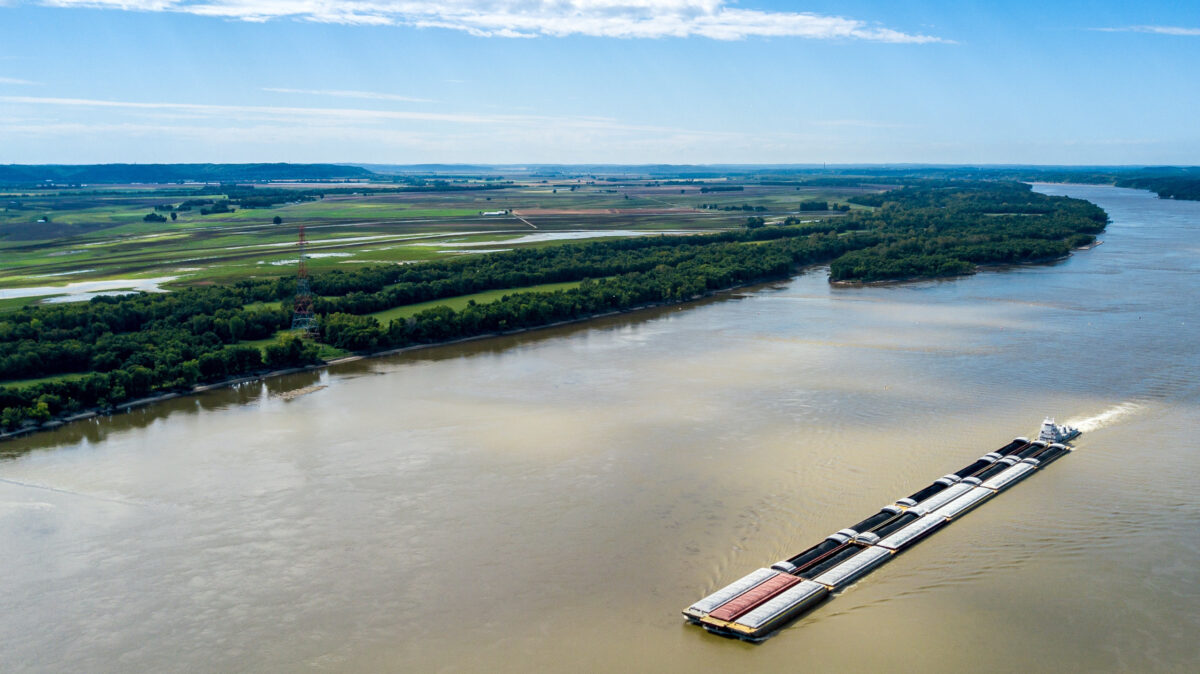Water Resources Development Act 2020 ‘Unlocks’ the Possibilities for U.S. Waterways
Megan Nelson
Economic Analyst

photo credit: Getty
Megan Nelson
Economic Analyst
The U.S. House-approved Water Resources Development Act of 2020 (H.R. 7575) authorizes the construction of 34 new projects as well as the study and construction of locally driven projects that were developed in cooperation and consultation with the Army Corps of Engineers.
The bill adjusts the cost-share for construction and major rehabilitation of inland waterways projects from a 50/50 split to 65% from the general fund of the Treasury and 35% from the Inland Waterways Trust Fund. The bill also authorizes the deposit of additional funds into the Harbor Maintenance Trust Fund for dredging and port modernization projects.
Agriculture depends on safe and efficient ports and inland waterway infrastructure to maintain global competitiveness. Investment in crucial waterway infrastructure helps keep food costs down for consumers and gives American farmers a transportation cost advantage over their foreign competitors (Keeping U.S. Farm Goods Flowing into the Global Economy).
Inland Waterways Trust Fund Cost Share
WRDA 2020 would reduce the share drawn from the Inland Waterways Trust Fund for lock and dam projects on rivers from the current 50% to 35%. This would increase the Treasury’s general fund cost share for these projects from 50% to 65%, Figure 1. This adjustment to the cost-share ratio will allow trust fund dollars to fund more projects. The proposed change to the cost-share ratio is not permanent and would apply only to projects beginning before the end of 2027.

The Inland Waterway Trust Fund is funded through a 29-cent-per-gallon tax on barge fuel, bringing in $121.2 million in revenue in 2019. According to the Inland Waterways Users Board Organization, the reliance on the administration’s consistently low IWTF annual revenue estimates have led to under-investment in the inland waterways system’s modernization. Figure 2 illustrates actual annual Inland Waterways Trust Fund receipts- the revenue brought in by the tax on barge fuel- compared to the administration’s annual budget proposals from 2016 to 2019.

Unlocking the Harbor Maintenance Trust Fund
According to the Congressional Budget Office, Deposits into the Harbor Maintenance Trust Fund from tax revenues and interest averaged $1.5 billion each year over the last 10 years. However, the amounts appropriated from the fund averaged only $1 billion each year. WRDA 2020 is set to “unlock” the $9.3 billion that’s been collected and deposited in the HMTF by those that pay the 0.125% ad valorem tax based upon the value of cargo imports.
HMTF funds were partially unlocked earlier this year in the CARES Act, but annual expenditures from the fund were capped at the amount of the previous year’s HMTF revenue. The provision in the CARES Act will not allow for Congress to retroactively spend from the fund’s current $9.3 billion balance, however, and applies only to “annual receipts and interests,” meaning it will ensure that all future HMTF revenues are used for the purpose of dredging. WRDA 2020 would expand on this by allowing access to additional funds from the existing HMTF balance.
The inability to access and fully utilize those dollars on port dredging has stalled American agriculture’s comparative transportation advantage and contributed to lost export opportunities to the detriment of U.S. economic growth. According to USDA’s Agricultural Marketing Service report, “Importance of Inland Waterways to U.S. Agriculture”, overall barge traffic has grown, outdated and failing infrastructure has given rise to more frequent delays, amounting to more than $44 million in additional costs per year.
Next Steps
In early May, the Senate Environment and Public Works Committee passed its WRDA bill, America’s Water Infrastructure Act of 2020. The Senate’s version included a permanent cost-share ratio adjustment for construction and major rehabilitation projects at 65% from the Treasury’s general fund and 35% from the IWTF, with no sunset provision. The Senate’s proposal has not yet received a floor vote. Congress has successfully enacted three consecutive WRDAs in 2014, 2016 and 2018.
Summary
American agriculture’s competitive international advantage largely depends upon the quality, reliability, accessibility and cost-effectiveness of the national transportation system. The modernization and repair of our nation’s inland waterways and ports are necessary to maintain this advantage. WRDA 2020 is set to increase maintenance and modernization projects on the inland waterway system and allow for the full utilization of trust funds on the most-needed projects.